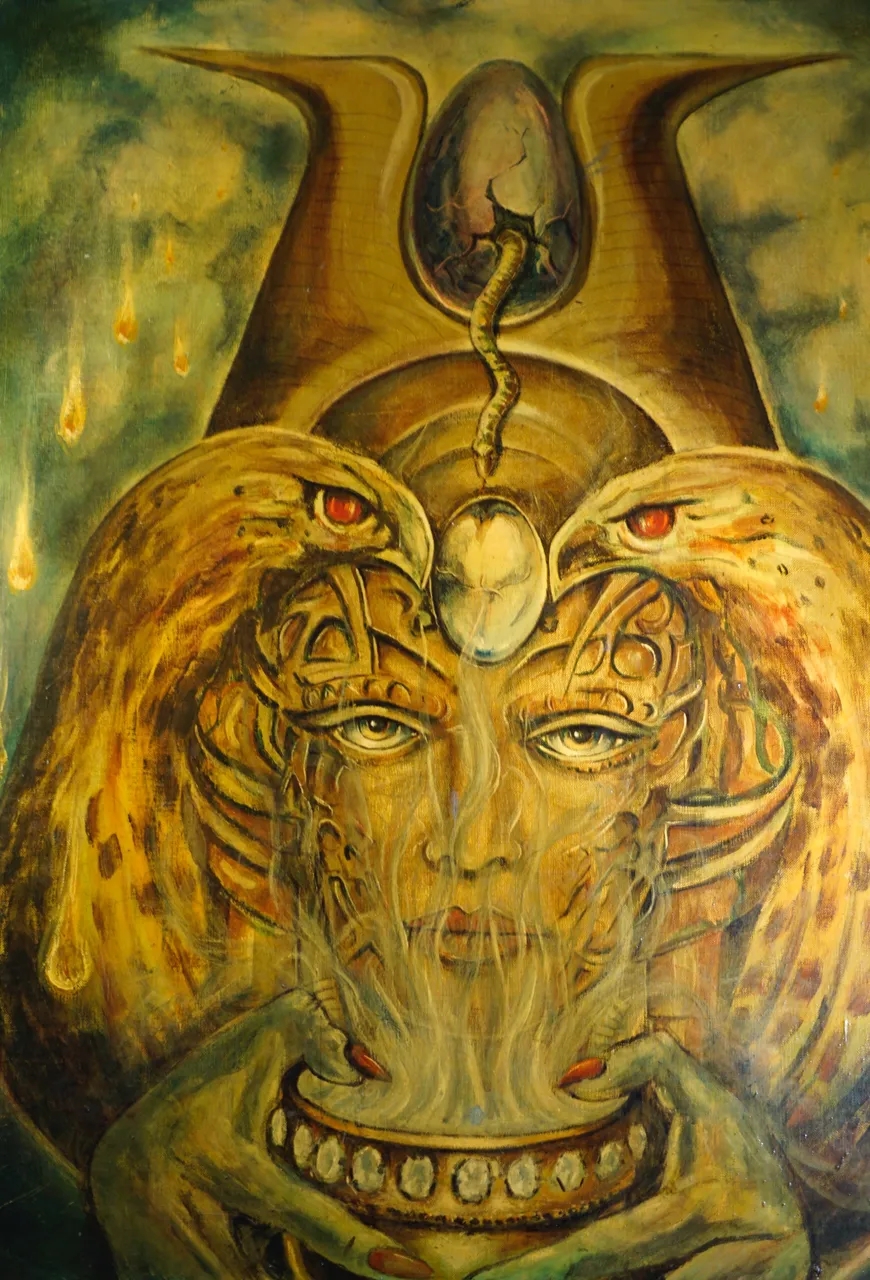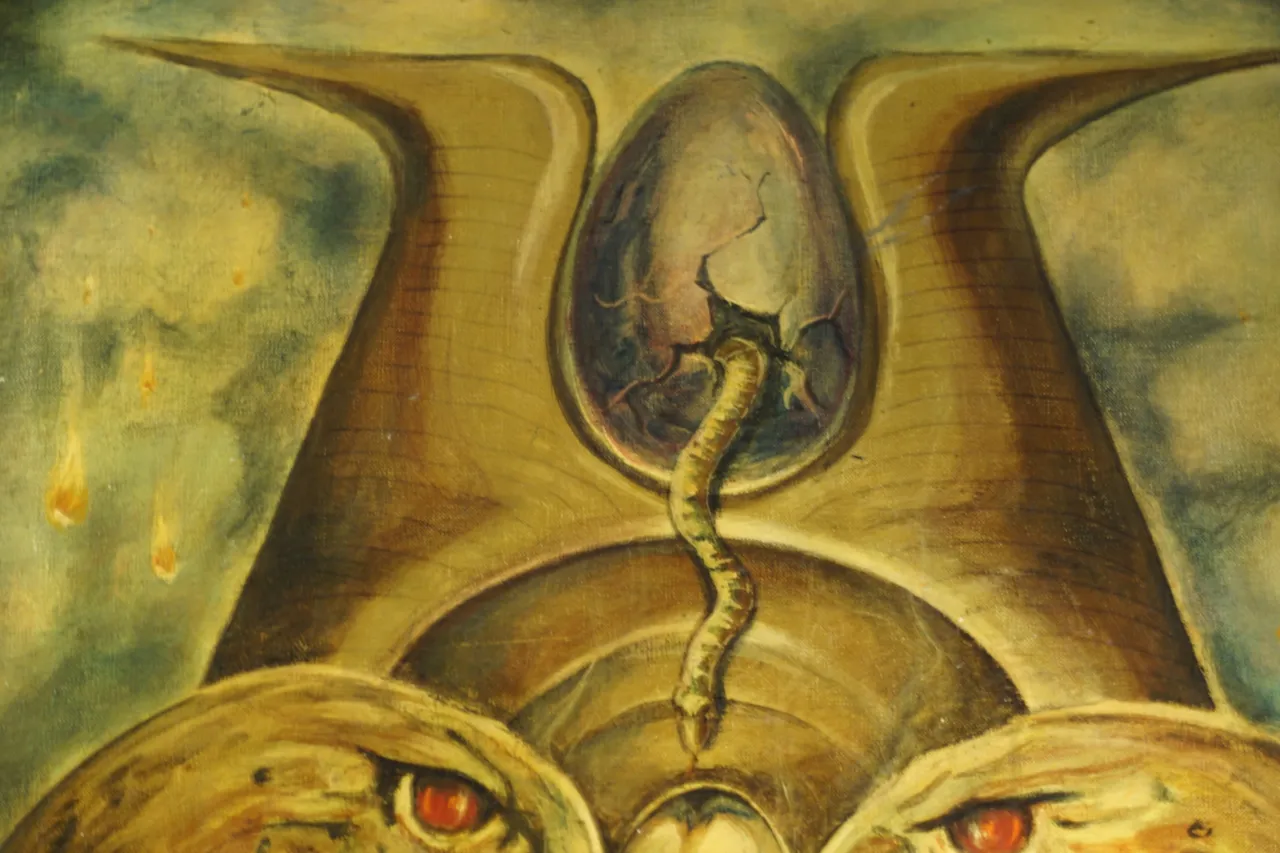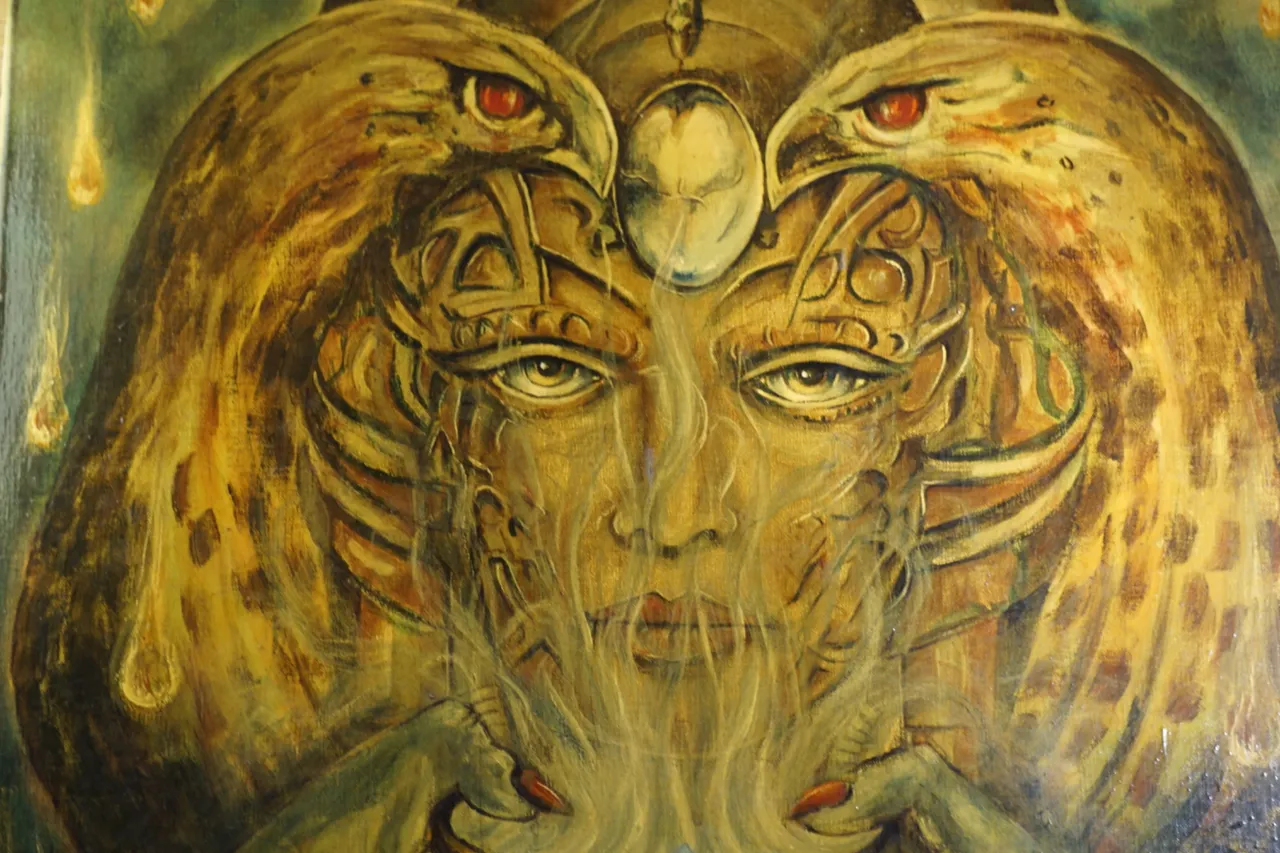Good day dear community, I hope you are all well and you have a great start to the new weekend! In this post, I would like to discuss mythology and hope you can expand your knowledge.

Here you can see a breathtaking oil painting by the Dutch artist Wally van velde, which is intended to bring the Mesopotamian goddess ishtar closer and I particularly admire the attention to detail and the choice of the right colors in this work. Isthar is a relatively complex and diverse goddess and is also considered the goddess of love or fertility and she is considered one of the oldest goddesses which is also considered a model of the other love gods from other cultures and over time her worship changed. Her representation can vary greatly and there are interpretations that she can appear as a female or male form and she was also considered an important goddess of the sky who has been associated with the evening as well as morning star and in addition she also had warlike attributes and as a powerful goddess she also had to ensure that fertility remains on earth and was thus also considered a guardian of life and her best-known legend probably comes from the Epic of Gilgamesh, which is also considered one of the oldest traditions of humanity. Isthar was also considered the protector of the city of Uruk and she can also be seen as one of the oldest goddesses who expresses the female aspects and also about her origin the legends vary and typical symbols of her are the snake, her two birds which are a mixture of an eagle and lion, her gemstone Lapis Lazuli and others. She was also considered a guardian of secret knowledge who had supernatural abilities to realize her ideology and in other times she was also considered an important goddess, but here she was referred to more as a pure goddess of war and was also associated with the goddess Inanna. The goddess Lilith was also sometimes associated with her and once she lived in the world tree and after it was split by Inanna she was forced to flee and both goddesses are very similar and are a personification of femininity but it is assumed that Lilith is even older. Isthar also plays an important role in occultism and according to the faith of the Phoenicians as well as Sidonians, once the goddess Isthar transformed there into Astarte and later into the demon Astaroth who is also seen as the duke of the hell and is in close contact to Lucifer.


Thank you for the visit and I hope you could learn something new about mythology! I captured these pictures with my Camera Sony Alpha 6000 plus 55-210 mm lens.